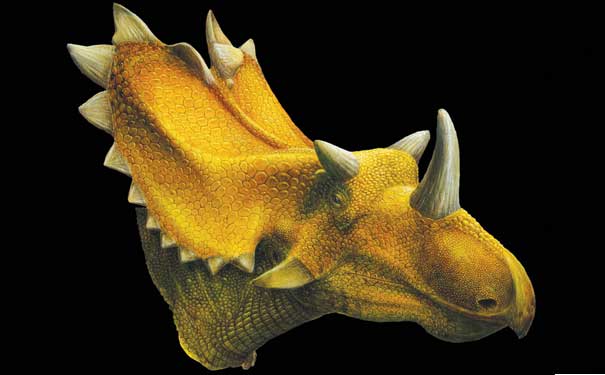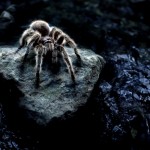
Artistic representation of Kosmoceratops richardsoni. Image: Lukas Panzarin
Two new species of horned dinosaurs unearthed in the United States were inhabitants of the lost continent of Laramidia, scientists believe.
Kosmoceratops richardsoni and Utahceratops gettyi, both relatives of the horned icon Triceratops, roamed an area near southern Utah, at a time when a great body of water split the US in two.
Dr Eric Roberts of James Cook University is among a team studying the findings, and said in a press release that Kosmoceratops was one of the most ornate-looking dinosaurs known to science. “[It] possesses a total of 15 horns — one over the nose, one atop each eye, one at the tip of each cheek bone, and ten across the rear margin of the bony frill.”
Scott Sampson, the lead author of the study and a researcher from the University of Utah described the many skull horns of the five-metre long Kosmoceratops as “lousy weapons to fend off predators”.
“It’s far more likely that they were used to intimidate or do battle with rivals of the same sex, as well as to attract individuals of the opposite sex,” he added.

Artistic representation of Utahceratops gettvi. Image: Lukas Panzarin
Utahceratops was six to seven metres tall with an oversized head. Its skull measured 2.3 metres long with a large horn over the nose, and short, blunt eye horns projecting to the sides.
An ancient landscape
Laramidia was roughly the size of Australia and would have provided a swampy, subtropical climate for dinosaurs to roam.
Through fossil and trace evidence, scientists have pieced together an insight into the landscape experienced by dinosaurs. It was an abundant, leafy world filled with insects, small reptiles and mammals including lizards, turtles and crocodiles.
Dinosaurs dominated the Earth, with more than two-dozen giant species living across the relatively small landmass. Scientists are still working to understand how these territorial species separated themselves, although some suggest the abundance of food may have prevented excessive fighting.






